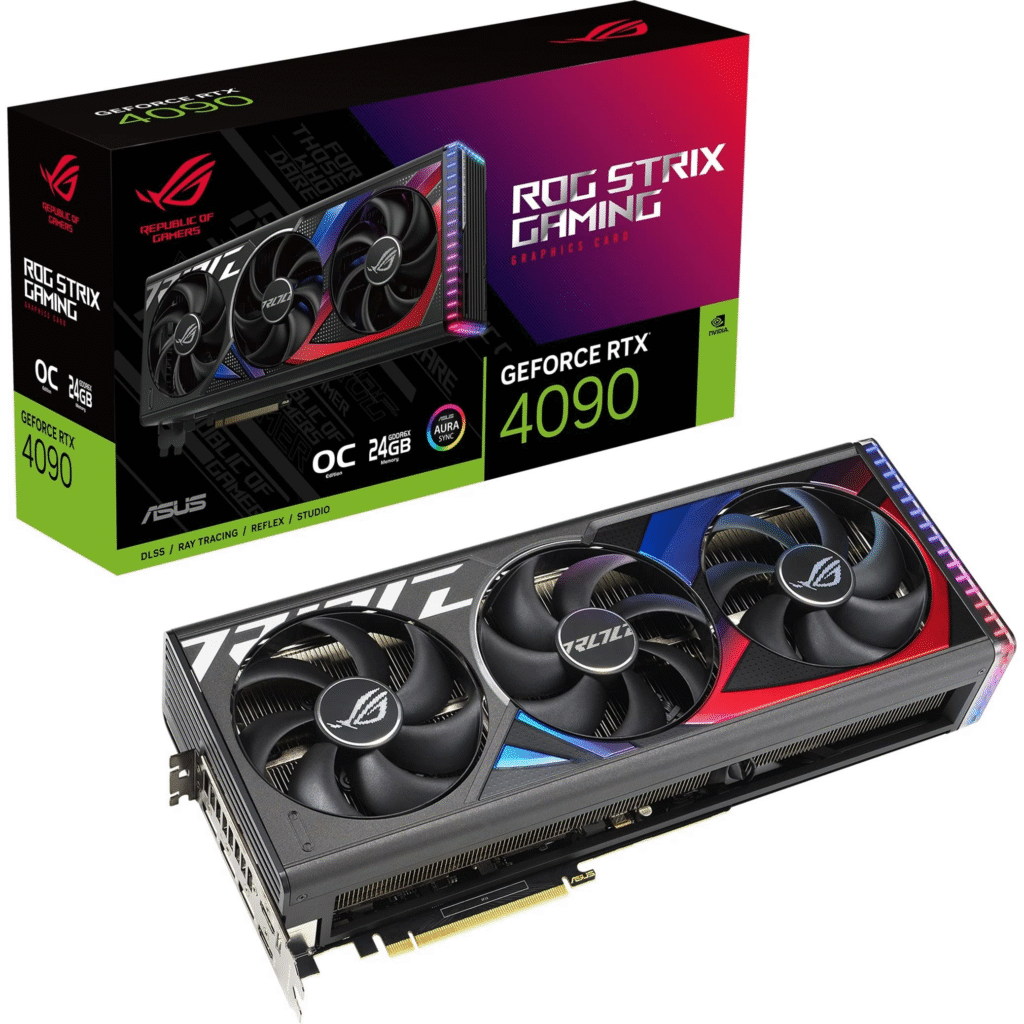🎮 Best Graphics Cards for Gaming & Streaming: What to Get in 2025
If you’re building or upgrading a PC for gaming and streaming, picking the right GPU (graphics card) is one of the most important decisions you’ll make. The GPU impacts how smooth your gameplay is, how good it looks, and how crisp your stream appears to viewers. In this guide, I’ll break down what to look for, some trade-offs, and a few top-tier picks (with options across budgets).

What Matters for Gaming + Streaming?
Before we jump into models, let’s walk through the key specs and features you should care about when choosing a GPU:
| Spec / Feature | Why it matters | Target / tip |
|---|---|---|
| VRAM (Video RAM) | More VRAM helps when textures are high-res, running at higher resolutions, or dealing with multitasking while streaming. | 8 GB is a reasonable baseline; 12–16 GB is safer for 1440p+ or future-proofing. |
| Encoding / Hardware Encoder (NVENC, AV1, etc.) | Streaming requires encoding video while gaming. GPUs with better built-in encoders reduce load on your CPU and improve stream quality. | NVIDIA’s newer NVENC generations are solid; newer architectures may support AV1 or other efficient codecs. |
| Core performance / architecture / throughput | How many frames per second (fps) you can push and how detailed your visuals are. | Look for recent-gen models; avoid underpowered older cards if you want smooth 60+ fps at decent settings. |
| Cooling / thermals / noise | A hot, noisy GPU is distracting and may throttle. | Triple or dual fan designs, good heatsinks, quiet fan curves, and airflow in your case matter. |
| Power requirements / connectors / size | Some GPUs need beefy power supplies and enough space in your PC case. | Check your PSU wattage, power connectors (8-pin, 12VHPWR, etc.), and ensure the card fits your case. |
| Driver support / updates / features | New games, OS updates, and streaming software depend on stable drivers and optimizations. | Stick with reputable brands and recent architectures to get ongoing support. |
For gaming alone, you might lean more heavily on raw performance. But for gaming plus streaming, the built-in encoder and how the GPU handles multitasking is what separates a good card from a great one.
Top Graphics Cards to Consider in 2025
Here are some standout GPUs across different tiers, balancing gaming and streaming performance. (Prices and availability change often — always check current listings.)
💎 High-End / Premium Picks

- ASUS ROG Strix GeForce RTX 4090
The “monster” card. If money is no object and you want maximum performance for 4K gaming, high settings, and ultra-smooth streaming, this is it. Its encoder and raw power make it overkill for many, but future-proof. - MSI GeForce RTX 5090 32G GAMING TRIO OC
One of the newest generation cards (assuming availability). If you’re targeting bleeding-edge performance or planning to push into 4K/8K streaming, this kind of card gives you extra headroom.
🔼 Upper-Mid / “Sweet Spot” Picks

- ASUS TUF Gaming GeForce RTX 5070 Ti
Excellent for 1440p gaming and capable for streaming. You get a recent architecture, strong encoder, and enough VRAM for demanding scenes. - ASUS TUF Gaming GeForce RTX 5070 OC Edition
Slightly more modest version in the same series — good balance if you don’t need all the extra juice of a Ti. - MSI GeForce RTX 5060 Ti 16G Gaming Trio OC
For 1080p to 1440p gaming with solid streaming capabilities, this card delivers strong value. The 16 GB VRAM also gives you breathing room for more textures or multitasking.
💸 Mid / Value Picks
- Gigabyte Radeon RX 9060 XT Gaming OC
Great choice for solid 1080p/1440p gaming. AMD’s encoders have improved, making it more viable for streaming than earlier generations. - Sapphire PULSE Radeon RX 9060 XT
A clean, efficient build that’s often well-priced. Good balance between performance and cost. - Gigabyte Radeon RX 7600 Gaming OC
If your budget is tighter, this card is still capable of playing many modern titles at decent settings and supporting decent-quality streams at lower bitrates. - Intel Arc B580
A more “outsider” pick. Intel’s Arc line is newer and has potential. If you get a model with decent encoding support (XeSS, etc.), it can be an interesting wildcard — especially if prices are favorable.
How to Pick for Your Use Case
Here are steps to narrow down:
- Decide your target resolution + frame rate.
- 1080p / 144 Hz? Many mid-tier GPUs suffice.
- 1440p / 240 Hz or 4K? You’ll want something in the upper-mid to high-end range.
- Check CPU + system balance.
Even the best GPU is bottlenecked by a weak CPU, slow storage, or insufficient memory. Make sure your other parts can keep up. - Factor streaming demands.
If you’re streaming at 1080p60 or higher, you’ll want a card with a modern, efficient encoder — so you don’t choke your CPU. Also, more VRAM helps when your stream overlays and scenes get complex. - Mind your PSU / connectors / case space.
GPUs like the 4090 or 5090 might require 850 W+ PSUs or special 16-pin connectors. Make sure your case has enough clearance (length/depth) and airflow. Double-check the power rails and connector compatibility. - Budget & future upgrade path.
Sometimes paying a bit more now saves you from needing to upgrade everything in 2 years. But don’t overspend — pick what matches your goals.
Example Use Cases & Suggestions
- If your goal is 1080p streaming + eSports games, a GPU like the RTX 5060 Ti or RX 7600 is more than sufficient.
- If you’re doing 1440p + high-refresh gaming + streaming overlays + chat windows, aim for something like the RTX 5070 Ti / 5070 / RX 9060 XT.
- If you’re going big — 4K streaming, high visual fidelity, future-proofing — you’ll want to invest in the top-tier cards like the 4090 or the latest-gen “90” series.
Final Thoughts & Tips
- Driver updates matter. Brands like NVIDIA, AMD, and Intel continue releasing optimizations for both gaming and streaming. Stay updated.
- Cooling & airflow > small gains in clock speed. A cooler, well-ventilated card will perform more consistently than one pushed to the edge in a cramped case.
- Watch benchmarks & user reviews. Real-world reviews and frame-time tests are more useful than pure spec sheets.
- Don’t forget the rest of your system. Your RAM, storage (SSD/NVMe), motherboard, and CPU all play a role in giving you smooth, stutter-free performance.





